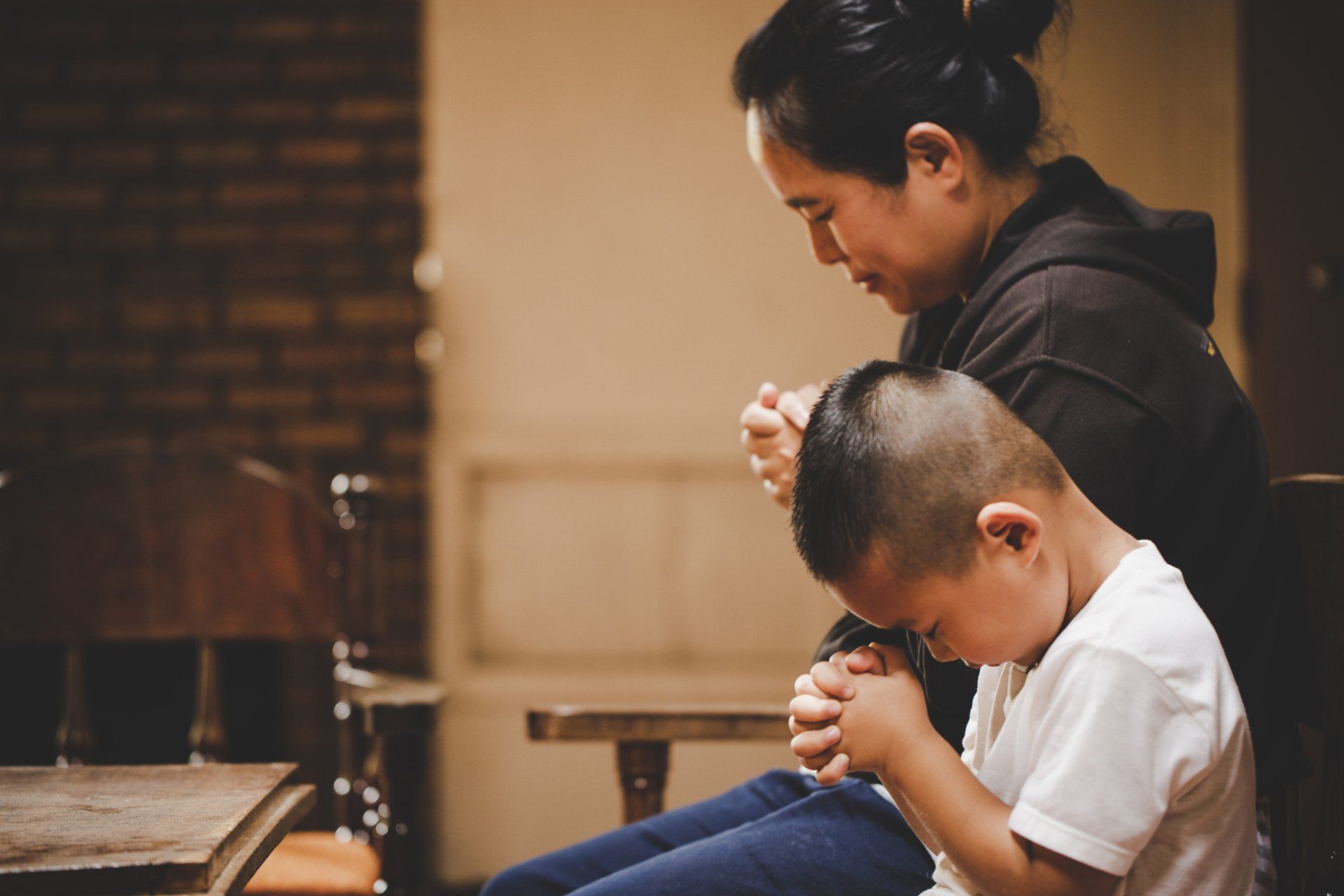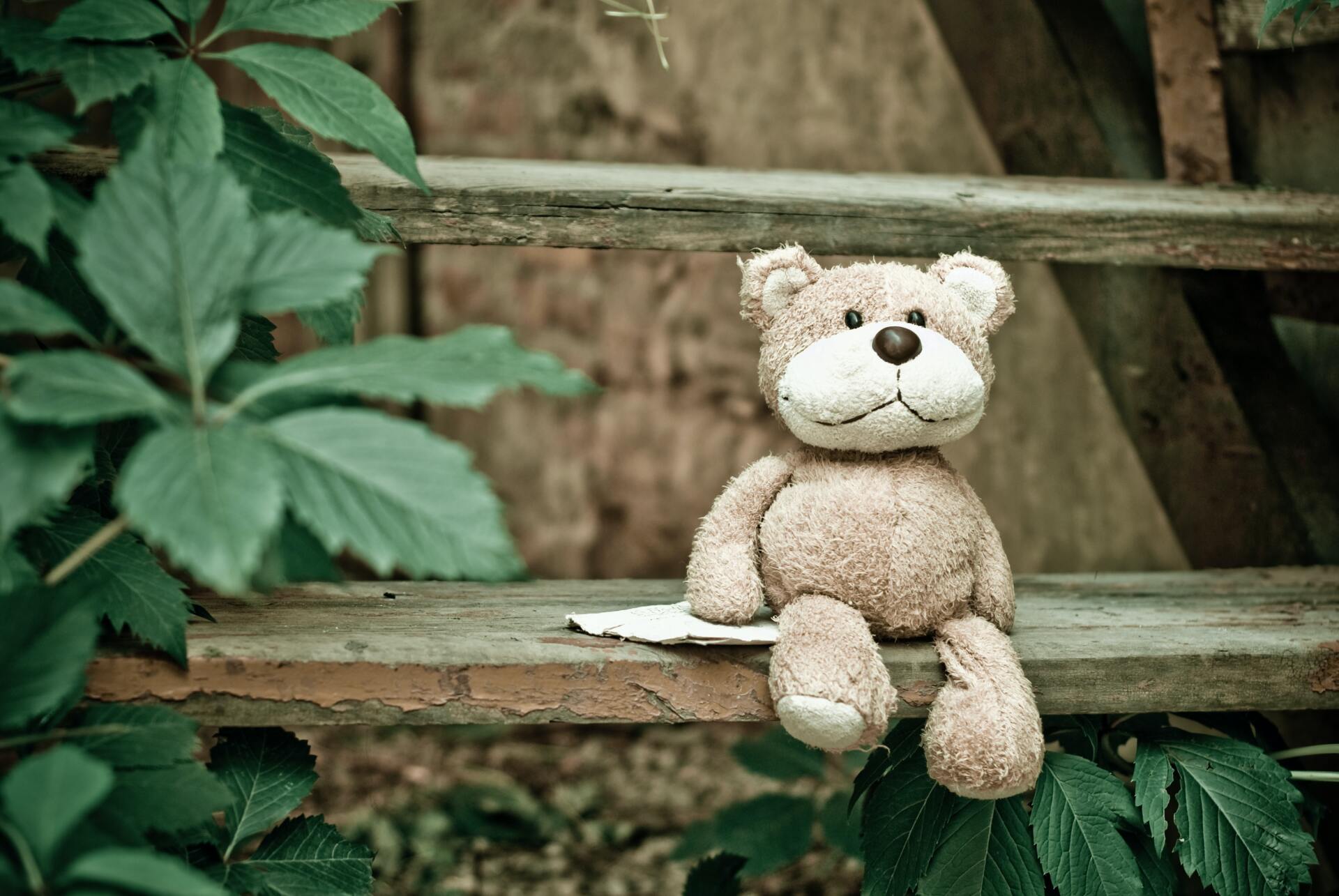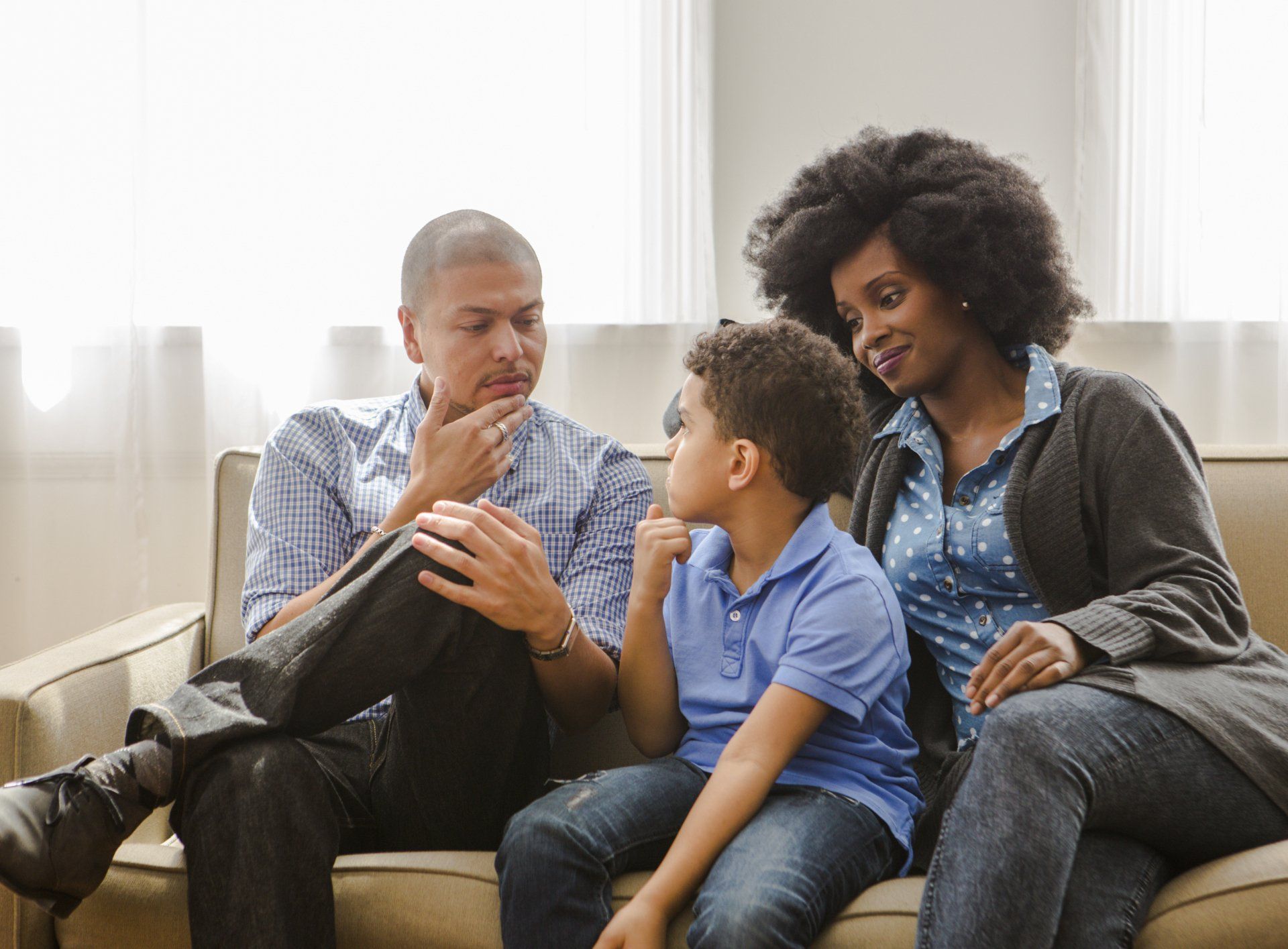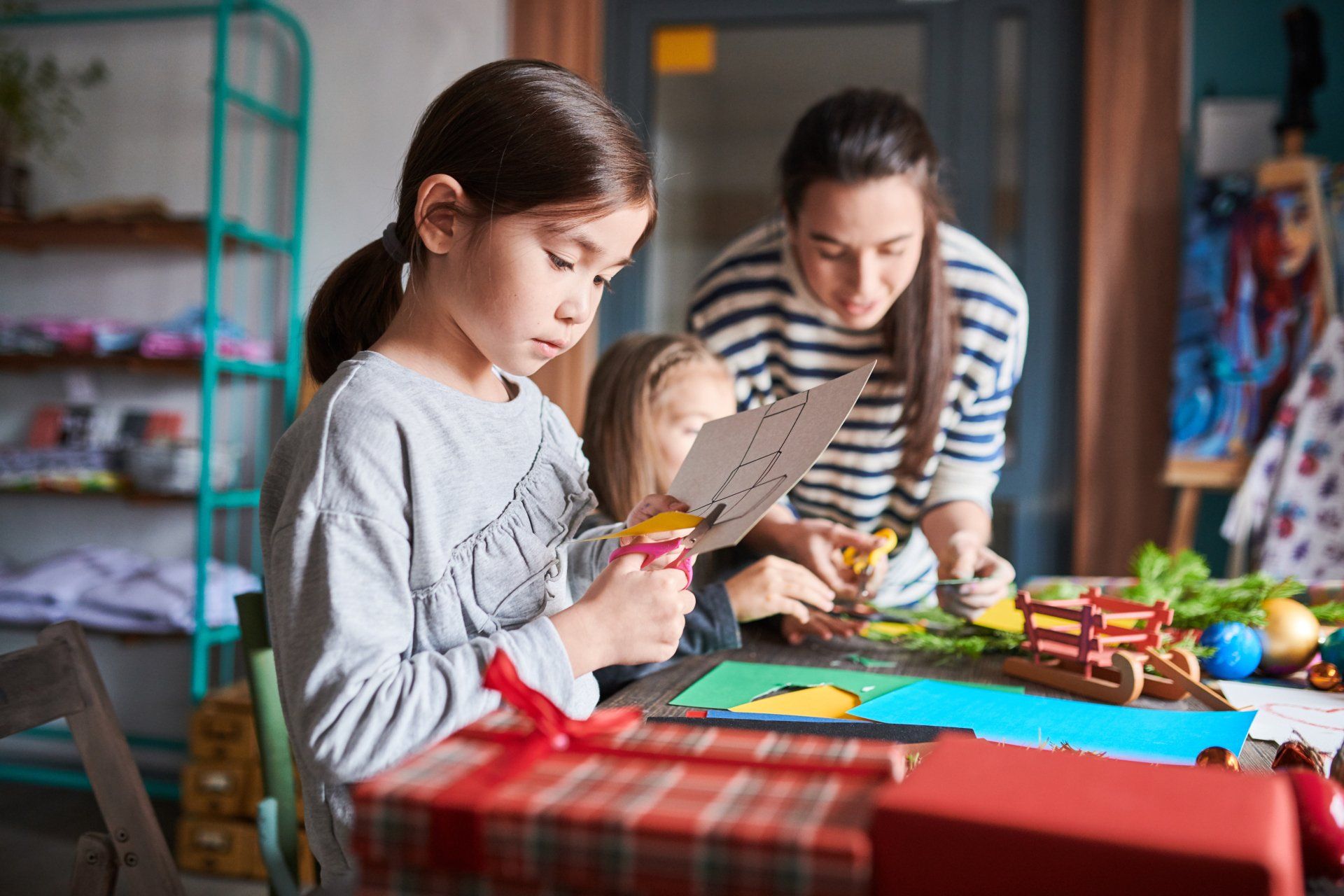Resources
Guidance, Information and Resources from Keefe

By Dr. Emily McClatchey
•
15 Mar, 2021
After a death, to-do’s abound. I n my work as an end-of-life consultant, I am often charged with helping surviving loved ones wrap up the affairs of the deceased. This is no easy task, and is only made more challenging by grief and emotional upheaval that can make even getting out of bed feel like climbing Mt. Everest, not to mention raising kids and tying up an endless list of loose ends. In my work with survivors, I have put together a simple guide culled from several different sources to make the process of wrapping up the affairs of the deceased a little more simple and straightforward.

By Dr. Emily McClatchey
•
15 Mar, 2021
When Facing a Death, Kids: Seek Validation. Acknowledging the child’s loss affirms a child’s sense of himself as a valuable, legitimate member of a family and larger society. Adults should speak directly, frankly, and immediately about death to a child, using concrete language and avoiding euphemisms like “resting in peace” or “gone to a better place.” In empathically engaging with a child about death, you should not be too worried about upsetting them or making things worse. Like adults, children benefit from social support: it reduces stress and makes us less prone to lasting psychological problems. Try to let the child lead, listening carefully to her and giving her direct and simple answers to any questions she may have. Crave Ritual. Loss can make children feel even more out of control than usual. Providing them with a chance to hold a ceremony or ritual promotes their sense of personal agency. Establishing a predictable, clear routine is especially important given the changes that inevitably accompany loss. Knowing what to expect gives kids a sense of authority when they otherwise feel powerless. Struggle to Understand. At any age, disbelief and denial are common responses to loss. The natural brain development of children puts them at a disadvantage in coming to terms with the loss. Children do not have the capacity to fully grasp concepts, may ask repetitive questions, or may be confused. A clear, consistent message delivered patiently in frank language by someone they trust is best. Tell Their Stories. Children are naturally drawn to stories and storytelling. Storytelling creates cohesion and fosters understanding. By becoming authors of their own experience, children can regain a sense of control and understanding about their loss. Allowing children the freedom to tell their stories gives them a sense of self-competence and confidence as they face challenges. Journaling, drawing, creating and communicating with others about loss promotes healing from grief and honors the child’s relationship with that which has been lost. Collect Mementos. Children are natural collectors. In the event of a loss, this tendency to collect may intensify. This comes from a desire to reinforce their developing identities and possess items that they like and identify with. During loss, kids often seek keepsakes, items, and ways to honor and memorialize that which has been lost. Importantly, many children fear that they will forget those who have died. Memories fade over time, especially in minds that are still developing at the time of the loss. This is scary for children who cling to memories as their only way to remain connected to the deceased. You can help your child curate and store items in a special container that keep memories alive. Feel the Pain. Children somaticize, meaning they tend to express grief through their bodies rather than putting words to their complex emotions. After a death, you might notice an increase in aches, pains, and boo boos. Stomach and head aches are common. Children also may act out aggression, anxiety, and sadness through their bodies. Soothing words and gestures will help them understand that you recognize their pain and will tend to them. Experience Fear. Anxiety, fears and worries escalate in times of loss. Many children regress to behaviors they have outgrown or that are more commonly seen in younger children. You may notice sleep difficulties, nightmares, or a fear of the dark. In school, students may have difficulty concentrating, may easily lose focus, or may develop academic troubles. Over time, this should subside, so don’t be too afraid to indulge them a little with childlike measures to make them feel less afraid, like a nightlight, worry dolls, or a stuffed animal at bedtime. Feel Guilty. Although unwarranted, guilt is a common response in children when they experience the death of a loved one. Natural aggressive feelings like sibling rivalry, frustration, and parental opposition are all healthy parts of growing up. Unlike adults, though, children aren’t yet able to draw firm lines between reality and fantasy. They may mistakenly believe that their aggressive feelings somehow inflicted real pain or caused a death. They may fear that any anger they feel after a death makes them inherently bad. Children need to be reassured that they are not to blame for the death, and that anger is normal. They also need space to honor and express their love for the deceased, to reinforce the self-perception that they are loving and kind. Are Still Kids. Play is the work of childhood. Children use play to work out aggression, to manage anxiety, and of course, to have fun! In the face of loss, they often vacillate between grief and play, and may surprise you with their easy ability to shift attention away from grief rather than wallowing as adults tend to do. And being kids, they love gifts, treats, and mail- a personalized touch that says I love you, I understand you are suffering, and I wish you well can go a long way.

By Dr. Emily McClatchey
•
15 Mar, 2021
Ashes to ashes the green way. Water cremation known by any other name (Alkaline Hydrolysis, Aquamation, Flameless Cremation, Resomation, Biocremation) is still water cremation. But what on earth is it? The Cremation Association of North America describes the process, developed in the 1990s, as "a water-based dissolution process for human remains that uses alkaline chemicals, heat, and sometimes agitation and-or pressure, to accelerate natural decomposition."

By Dr. Emily McClatchey
•
15 Mar, 2021
Meeting someone in their grief is hard. We can help. My friend had longed for, tried for, prayed for a baby for a long time. And now she cradled her precious stillborn baby girl in her arms. “At least,” her mother said to her, “the baby died before she grew up. Imagine if you had had her for a few years and then had to lose her.” My friend and I have known each other for years, but this was the first time she was talking to me about this experience, 20 years in the past. Her pain was still raw, palpable, and contagious. “But she didn’t understand. I would have given anything, anything, to spend even one hour with her alive.” To be in the presence of another person’s suffering is sacred. It is also terrifying, as sorrow that great threatens to swallow whole anyone who bears witness. I listened to my friend, cried with her, and felt angry at her mother’s seemingly insensitive response to this tragedy. But then I recognized that her mother’s only intention was to stem her daughter’s unbearable agony. This is human: a desperation to ease our loved ones’ pain. I became aware in that moment of my own acute desire to make it better for her, twenty years later. At the same time, I was fearful of committing the same crime, inadvertently wounding my friend further. What could I say? It’s not as if I haven’t had practice. As a therapist, my job is listening and responding to difficult stories. My business sending care packages to grieving children immerses me in the pain of others. My doctoral work featured interviews with Holocaust survivors. Yet here I was, silenced by my fear of the clumsy misstep. Now that I have cancer, I am on the receiving end of efforts to ease my suffering. While I recognize that the intentions are uniformly kind and aimed at alleviating pain, I have sometimes cringed at others’ inelegant reactions to my news. I have come to the conclusion that there is really only one rule that matters when bearing witness to another’s suffering. At all costs, avoid any statement that begins with “at least….” “At least it didn’t spread.” “At least he didn’t suffer.” “At least you got to say goodbye.” Why is it so hard for us to find the right words for the sufferer? We feel uncomfortable and helpless, so we strive to do something that brings comfort, not only to the sufferer but also to ourselves. We want to feel like we are helping; we want to be uplifting, hoping that somehow our optimism’s momentum can pick up the other person and drag her from despair. Empathy can be a powerful antidote to pain, but empathy asks a lot. Empathy requires us to join others in their dark place and match their tenor. When we empathize with someone in pain, we experience pain too, our mirror neurons firing in the same sad, desperate patterns. We listen and we hear heartbreaking melodies in minor keys; we feel the agony in the music. The moment we move toward a solution, we attempt to be uplifting, the moment we utter the words “at least…,” we have jumped to a higher octave, a more cheerful note in a major key. We are now singing out of tune with the sufferer. “At least…” not only signals a break in empathy, it also induces guilt. Any statement that begins with these words will be followed by the identification of a privilege, an indication of the ways in which the sufferer’s situation could be worse. What is the result? The sufferer is implicitly called to agree, to assuage the speaker. “Yes, you are right. Thank you for pointing that out.” All the while, the sufferer feels guilty. “Maybe I don’t have a right to wallow.” As a therapist, I heard this a lot, this guilt in feeling pain when so-and-so had it worse. But the most damaging result of, “at least” isn’t the break in empathy or the call to guilt. It is the fact that the use of “at least” effectively robs the sufferer of the chance to activate her own resilience. She can no longer discover the silver lining herself if you’ve preemptively pointed it out. Educational philosopher Maria Montessori once wrote about a little boy who, smaller than his peers, was struggling to see what was happening in the playground’s water basin around which the bigger and older children had excitedly gathered. This boy spotted a stool on the far end of the playground, dragged the heavy thing clear across the yard, and was just about to mount it and peer in when a teacher noticed his struggle and lifted him up to see over the top of his classmates’ heads. Montessori expresses her disappointment: “Undoubtedly the child, seeing the floating toys, did not experience the joy that he was about to feel through conquering the obstacle with his own force…. His intelligent efforts would have developed his inner powers… the little fellow had been about to feel himself a conqueror, and he found himself held within two imprisoning arms, impotent.” Trust me, there are plenty of “at least’s” with my cancer. At least I caught it early. At least we have good insurance. At least our kids are well supported. At least we have the financial and educational resources to advocate for the best treatment. There are silver linings everywhere. But I don’t want you to point them out to me. You might get them wrong. You might make me feel guilty. You might short-circuit my process. Let me generate and discover my own “at least’s.” Don’t rob me of my opportunity to summon my own inner powers, to conquer my own obstacles, to discover my optimism. Let your thought of “at least” trigger alarm bells. “Warning! Danger Ahead! Use Caution!” Instead, try a gentle hand on a shoulder. Try a “tell me more about your experience.” Or try silence and a listening ear.

By Dr. Emily McClatchey
•
15 Mar, 2021
Children (and adults!) activate resilience through special connections to things. The night before I headed into the hospital for my double mastectomy, my daughter gave me her stuffed dog. “Chancy will take care of you while you are in the hospital,” she told me. Initially, I was reluctant to take her up on the offer. I had visions of losing Chancy, or spoiling him with hospital germs. At that time, Chancy wasn’t the most prized of my daughter’s furry friends, but he was important. He had been gifted to her when she had spent the previous holiday in the emergency room replenishing her fluids with an IV when a nasty bout of the stomach flu left her dehydrated. A hospital social worker delivered Chancy as a parting gift as if to say, “thanks for participating in our program.” At the moment the social worker handed my daughter the dog in that emergency room, an ordinary dog was stamped with extraordinary meaning, bringing a small measure of comfort and specialness to a bleak situation. He was cute and cuddly, but more importantly, he was a symbol of recognition of my daughter’s suffering. The giver recognized that there were other places a six-year-old would rather be than the emergency room on Christmas Eve. Chancy helped her feel recognized and comforted. Once I brought Chancy home from the hospital after my surgery, his position in the Stuffy Hall of Fame was secure. He became my daughter’s full-on lovie and ever-present bedtime companion. He had served his family faithfully in their time of need, first my daughter, and then me. By accepting her offer to bring him with me, I had helped my daughter feel that she had contributed something meaningful, helpful and loving to ease my suffering. And indeed, when I woke up after my procedure and found Chancy in my recovery bag, I tucked him into bed and let his fuzzy comfort remind me of the love of my family. Having something soft to cuddle can provide a soothing function that can impact our emotional well-being. In one particularly interesting study, adults were made to feel either socially included (they were told “others chose to work with you this research task”), or excluded (“no one wants to work with you”). Afterwards, half of the subjects were invited to hold a teddy bear while answering questions about their emotional state. Among those who were excluded, those that held teddy bears expressed significantly more positive emotions. The researchers hypothesize that the mere act of touching a teddy bear might foster positive emotions and mitigate loneliness. We have long known of the importance of soft touch for babies. Infants have a vital, universal need for what Harry Harlow called “contact comfort:” the soothing physical connection to the soft and cozy. This need is so basic, it can even be met with inanimate objects. In his series of studies with primates in the 1950’s and 60’s, Harlow demonstrated that in the presence of a stand-in, terry cloth “surrogate mother,” infant monkeys explored their environment more freely and demonstrated significantly less fearful and isolating behavior than those monkeys with a wire surrogate. The monkeys’ ability to nuzzle the terry cloth surrogate protected them from the paralyzing, regressive, fearful behavior demonstrated by the monkeys with the cold, hard, wire surrogate mother. This contact comfort continues through childhood. Objects can help reinforce a sense of safety and security in tough times, and they become imbued with special meaning for children. In psychology, we call them transitional objects or comfort objects: they provide comfort as the child gradually transitions from dependence on parental figures to independence. According to the traditional developmental psychology’s attachment theory, the realization that we are separate beings from our caregivers occurs to us in infancy, and is experienced as a loss. We suddenly realize that we are utterly dependent and powerless, alone in the world and at the mercy of our connection with our caregiver. This anxiety prompts us to bond with inanimate objects that are inextricably associated with the soothing comfort and care of our primary caregiver (traditionally the mother), and this helps us maintain closeness and connection with mom, even in her absence. Through transitional objects, we are able to maintain the bond with mom via her “stand in” comfort object when she is increasingly separate. The security blanket, pacifier, or “lovie” is born. Transitional objects are soothing and beneficial for healthy development even in the absence of a major disruptive event, but can be especially important in times of trial following a death. They offer features that can be critically important for children’s coping mechanisms. In his landmark research about transitional objects, psychologist Richard Passman observed: “At times, the blanket seems more meaningful to an aroused child than does the mother herself.” Why would the upset child prefer an object even when mom is available? Because unlike mom, the object is totally under the aegis of the child, and he or she can exert total control over it instead of being at the mercy of its availability or independent functioning! The second helpful feature of a comfort object is that it offers the child a powerful opportunity for role reversal: the child can be in charge of taking care of it. The helpless stuffed animal becomes a psychological holder for the child’s fears and feelings of helplessness following the death of a loved one. The child can work through that anxiety in displacement- a less threatening, arms-length working through of difficult emotions from the position of the omnipotent caregiver. Chancy is afraid of the dark, so I have to turn the light on for him. A seminal research project from the 1970s reveals just how impactful this caregiving responsibility can be for people who have little control over their environment. Judith Rodin and Ellen Langer conducted an experiment in a nursing home in which they gave residents a houseplant. Half were told that the staff would care for the plants (the “control” group); half were in charge of taking care of the plants (the “engaged” group). The psychologists were astonished to find that a year later, those that were in charge of taking care of their house plants were more cheerful, active and alert than those who were not in charge, and less than half as many of the engaged group had died at the point of follow up compared to the control group. Of course, children are not nursing home residents, and plants are not transitional objects. But perhaps we can learn from this study how helpful it can be to give our un-empowered little people an opportunity to take care of something, especially in times of trial. If being responsible for a houseplant can be beneficial, this begs the question: what about a pet? A pet offers all the same aspects of a transitional object (and then some!): often soft, cuddly, yours, ready to receive care, and a holder for all kinds displaced of emotions (without a voice to object or correct). In fact, psychologists have investigated children’s experience with pets in their family, and by the children’s own account, they use pets as transitional objects. Pets can be wonderful companions and confidants to people of all ages, and kids don’t hesitate to make use of them to help them through hard times. While I have tried to provide the social science behind why kids get comfort from objects, as a parent I’m sure you’d chide me that your common sense tells you all you need to know about your child’s attachment to a special stuffed animal or blanket. In fact, your child’s connection to a special object should demonstrate to you that children are incredibly resilient, and will often seek out what they need, even as infants, even in the absence of parental intervention or guidance. But I’ve included it as a core tenet in helping kids cope with the death of a loved one because I think it is important to recognize and honor their efforts to help themselves. Doing so will help you - and them- remember that even though they are children, they have effective tools at their disposal to cope with life’s challenges.

By Dr. Emily McClatchey
•
15 Mar, 2021
Every child is unique, and every grief reaction is different. Children are always growing and changing, adapting to new skills that come with maturity. Therefore, it can be difficult to prescribe general rules about how to talk to children about death. If you’ve done any reading on the Internet, you have likely come across plenty of don'ts: don’t say “I know how you feel;” don’t say, “they’re in a better place;” don’t say “it is part of God’s plan.” All these don'ts, while helpful pointers, can make us nervous and frighten us right out of saying anything at all to kids. But if we refuse to talk to children about death, or we somehow signal that we must remain silent about loss, we are doing a disservice to the child and missing an opportunity to help them understand and make sense. Rather than explore what to avoid, let’s talk about proactive steps you can take to help your kids understand death.

By Dr. Emily McClatchey
•
15 Mar, 2021
Be authentic, not aspirational Perhaps you've already had the chance to read the obituary that went viral last year for 82-year-old Connecticut man Joe Heller. Here's a sampling of the very long text: “Joe Heller made his last undignified and largely irreverent gesture on September 8, 2019, signing off on a life, in his words, 'generally well-lived and with few regrets.' When the doctors confronted his daughters with the news last week that 'your father is a very sick man,' in unison they replied, 'you have no idea.'” The family goes on to say: “If there was ever a treasure that he snatched out from under you among the mounds of junk, please wait the appropriate amount of time to contact the family to claim your loot. We're available tomorrow.” And finally, “No flowers, please. The family is seeking donations to offset the expense of publishing an exceedingly long obituary which would have really pissed Joe off.” You can read the entire obituary here: https://www.courant.com/obituaries/hc-obituary-joe-heller-20190910-story.html

By Dr. Emily McClatchey
•
15 Mar, 2021
Even after a death, play reigns. How many of us remember the image of three-year-old JFK Jr. standing stoically at his mother’s side, saluting as his father’s casket passed by during the funeral procession? The photo of “John-John” is emblazoned in the collective memory of the nation, enduring as a heartbreaking and haunting picture of a child’s grief. With the recent death of the photographer of that photo, the image has been revived from the archives and splashed through the news media again. I have been submerged in understanding child grief, and the return of the salute photo got me interested in the bigger picture. Like all indelible images, this image beckons its viewer to imagine the story, evoking thoughts and feelings that influence our interpretations. Many people who were present at the time, including the photographer, military officials, political aids, and family friends explored their own versions of this photo and its meaning. As I grew increasingly interested in the story behind the salute, I came across a different viewpoint written by a former George magazine employee (JFK Jr.’s magazine). JFK Jr.’s comments to his employee journalist suggest that the media’s interpretation of his salute was inaccurate: the boy was not following his mother’s instructions to salute his father’s casket. The journalist goes on to conclude, “It was far more likely, I believe, that he was mimicking the saluting guardsmen who lined the street. He was having a moment of fun on an otherwise grim occasion.” This viewpoint is controversial, but I love it. Although conjecture, I believe this explanation has real merit. A three year old is literally built for play and has little understanding of the gravity of death. To be made to salute for the media or public’s benefit by his surviving parent seemed cruel to me. As I climb deeper into understanding the grief of children, I find myself protective of the child’s experience and resentful of the long shadow cast by adult interpretation, with all its accompanying complex thoughts and feelings. I don’t like the thought of a child, who is navigating an extremely challenging and devastating time, having to be burdened and bogged down by the expectations and projections of the public—it seems like unnecessary baggage the child is forced to carry at precisely the time we should be working to lighten the load. I would argue that if indeed John-John was having a moment of fun, that is not an inappropriate taboo or an interruption in what should be sacrosanct. I would argue that that bit of fun is itself sacrosanct: it is too valuable to be interfered with. Should we sully a young child’s reactions with our adult imposition of what’s right and proper and polite and appropriate? I fear that too often us adults are preoccupied with what we need and want instead of what the child needs and wants. Play is the work of childhood—it is vital to healthy human development, both cognitively and physically. Children use play to explore and learn about their environment, to work out aggression, to manage anxiety, and of course, to have fun! Play is as central to their lives as language is to ours, so it is only natural that play would have a prominent role in children’s grief reactions. It can be jarring for an adult to see how quickly and easily children vacillate between grief and play; just when you’ve braced yourself to answer that difficult question or prepared for the anguish of trying to comfort an upset child, they’ve seemingly moved on from that moment in time. Indeed, children may surprise you with their easy ability to shift attention away from grief rather than wallowing as adults tend to do. In time, the child will likely cycle back through their sadness and re-grieve. It is important to normalize this vacillation-- both for your own reassurance and for the reassurance to the child lest they feel guilty for following their natural instincts to play. Play is not disrespectful to grief, it is an important aspect of coping and processing. And if indeed John-John was having a moment of fun, more power to him.
Follow Us
©2021 Keefe Funeral Home ⋄
Admin
Obittree Privacy Policy Terms of Use Sitemap ⋄ Powered by
FrontRunner Professional &
TA ⋄ Designed by
Don't Rest On Pretty

